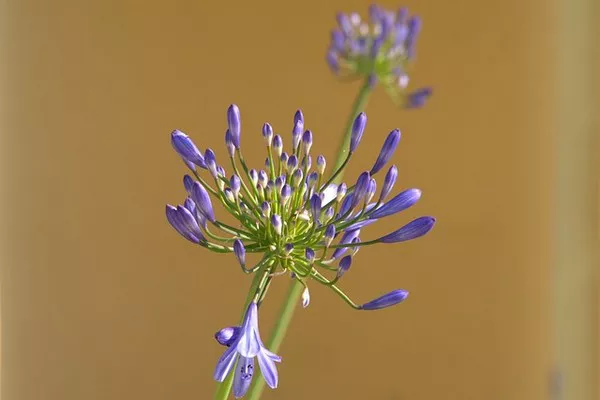Flowers have long been associated with beauty, symbolism, and sentiment. Throughout history, various cultures have assigned specific flowers to each month, creating a unique floral language that conveys meaning and sentiment. These birth flowers hold significance and can be a thoughtful way to celebrate birthdays, commemorate special occasions, or simply appreciate the beauty of nature. In this comprehensive guide, we will explore the birth flowers for each month, delving into their symbolism, historical significance, and common uses in floral arrangements.
January – Carnation (Dianthus caryophyllus)
The Carnation, with its delicate ruffled petals and spicy-sweet fragrance, is the birth flower for January. This flower represents love, fascination, and distinction. Traditionally, red carnations symbolize deep love and admiration, while white carnations signify pure love and good luck. Carnations are often used in floral arrangements for weddings, as well as to convey heartfelt sentiments during difficult times.
February – Violet (Viola odorata)
Violets, with their captivating fragrance and vibrant colors, represent February birthdays. These tiny, delicate flowers symbolize modesty, humility, and faithfulness. In Victorian times, violets were a symbol of secret love, making them a popular choice for romantic gestures. Violets can be used in both garden landscapes and as accents in floral arrangements.
March – Daffodil (Narcissus pseudonarcissus)
March is welcomed by the cheerful presence of the Daffodil, symbolizing rebirth and new beginnings. These sunny flowers represent hope and optimism. Daffodils are often used to celebrate the arrival of spring and are a popular choice for Easter bouquets. Their bright yellow hues can instantly uplift the spirits and add a touch of warmth to any floral composition.
April – Daisy (Bellis perennis)
The Daisy, with its simple yet charming appearance, is the birth flower for April. These flowers symbolize purity, innocence, and youth. Daisies are often associated with the arrival of spring and are a popular choice for bridal bouquets and garden landscapes. Their white petals and yellow centers create a striking contrast that adds a touch of elegance to any setting.
May – Lily of the Valley (Convallaria majalis)
May is graced by the elegant presence of the Lily of the Valley, symbolizing sweetness, humility, and a return to happiness. These dainty, bell-shaped flowers are known for their enchanting fragrance and are a popular choice for weddings and May Day celebrations. Lily of the Valley is often used to convey a message of happiness and good fortune.
June – Rose (Rosa)
The timeless Rose, with its exquisite beauty and rich symbolism, is the birth flower for June. Roses come in a variety of colors, each with its own meaning. Red roses signify love and passion, while white roses represent purity and innocence. Yellow roses symbolize friendship, and pink roses convey gratitude and admiration. Roses are versatile and can be used in a wide range of floral arrangements, making them a beloved choice for all occasions.
July – Larkspur (Delphinium)
Larkspur, with its tall, majestic spikes of colorful flowers, is the birth flower for July. These blooms symbolize love, levity, and an open heart. Larkspur flowers are often used in arrangements for special events like weddings and anniversaries. Their striking appearance and vibrant hues make them a captivating addition to any bouquet.
August – Gladiolus (Gladiolus spp.)
The Gladiolus, with its towering spikes of blossoms, represents strength, integrity, and sincerity. These flowers are often used to convey admiration and respect. Gladiolus blooms are a popular choice for floral arrangements at formal events, funerals, and as a gift to show appreciation.
September – Aster (Asteraceae)
Asters, with their daisy-like appearance and rich symbolism, are the birth flowers for September. These flowers symbolize love, patience, and elegance. Asters are available in a variety of colors, including purple, pink, and white, and are often used in mixed floral arrangements to add depth and texture.
October – Marigold (Tagetes spp.)
Marigolds, with their vibrant orange and yellow hues, represent passion and creativity. These flowers are often associated with celebration and festivities, making them a common choice for Dia de los Muertos (Day of the Dead) and other cultural celebrations. Marigolds are also used in floral arrangements to add a pop of color and cheerfulness.
November – Chrysanthemum (Chrysanthemum spp.)
Chrysanthemums, or “mums,” are the birth flowers for November. These blooms symbolize friendship, joy, and positivity. Chrysanthemums come in various colors, each with its own meaning. White chrysanthemums represent loyalty and honesty, while red chrysanthemums symbolize love and deep passion. These flowers are often used in bouquets, corsages, and floral arrangements for all occasions.
December – Narcissus (Narcissus spp.)
Narcissus, with their delicate, trumpet-shaped blooms, are the birth flowers for December. These flowers symbolize rebirth, renewal, and the hope of a bright future. Narcissus are often used in winter floral arrangements, bringing a touch of freshness and beauty to the holiday season.
Conclusion
The birth flowers for each month carry with them a rich tapestry of symbolism and history, offering a unique way to convey sentiments, celebrate special occasions, or simply appreciate the natural beauty of these blooms. Whether you’re selecting flowers for a birthday gift, a wedding bouquet, or a floral arrangement to brighten someone’s day, knowing the birth flowers can add an extra layer of meaning and thoughtfulness to your choice. So, the next time you’re considering the perfect flowers for an occasion, consult this guide to the language of blooms and select the birth flower that speaks to your heart.


